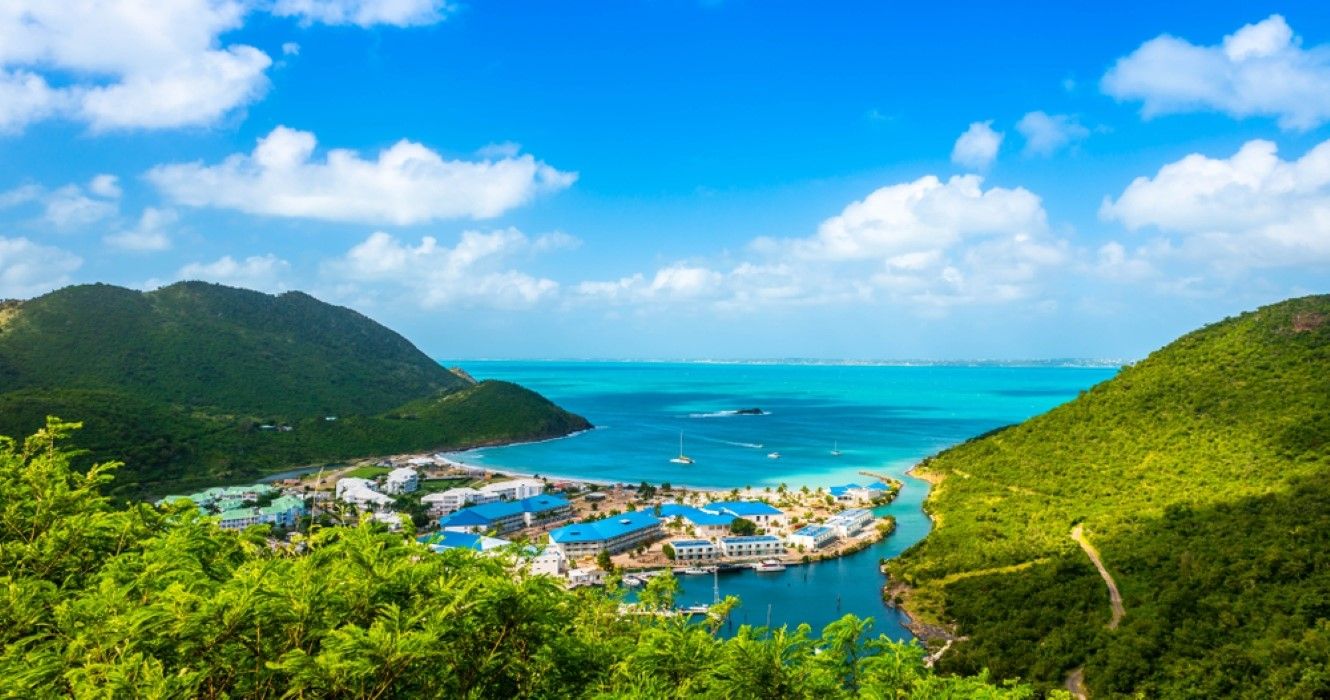Quick Links
It was way back in 1648 when the Dutch and the French officially split the island of St. Maarten/St. Martin a 37-square-mile outpost in the Leeward Islands of the Caribbean, roughly 200 miles east of Puerto Rico.
Prized by European colonizers, the Dutch and the French governments agreed to share the island when they signed the Treaty of Concordia, designating nearly 60 percent of the island – the northern part -- to France and the remainder to the Netherlands. As a result, the two-nation island is culturally diverse, providing a unique melding of each country's distinct personality and appeal, in much the same way that other Caribbean islands have cultural differences from each other.
While French and Dutch are the official languages of each country's side of the island, English is widely spoken throughout. Similarly, the official currencies are the euro on the French side and the guilder on the Dutch side, but U.S. dollars are accepted virtually everywhere.
Besides these practical differences, the French and the Dutch sides of the island have contrasting vibes and personalities, with the French portion offering a laid-back, refined atmosphere and the Dutch portion teeming with hotels, casinos, and a vibrant nightlife scene.
On The Lively Dutch Side, Nightlife And Casinos Abound
Although the Dutch side of the island is smaller, its population is higher, and it boasts about three times the number of hotel rooms as the French side. The island overall welcomed about 2 million tourists in 2019, a respectable showing even though St. Maarten doesn't have quite the panache of, say, Jamaica, which had more than 4 million that year.
Virtually all visitors arrive via the Dutch side's Princess Juliana International Airport. However, once arrived, the destinations of tourists to either the French or the Dutch side are not routinely available.
But a drive around the island will show that the majority of visitors stay and play on the Dutch side, mostly in the capital Philipsburg, and the resort towns of Simpson Bay, Maho, Indigo Bay, Oyster Bay, and Cupecoy.
Maho Village has scores of outdoor bars and lounges featuring live stage shows, plus many duty-free stores, and nearby Maho Beach is wildly popular for the spectacle of airplanes flying remarkably low over the beach crowds before landing at the adjacent Princess Juliana International Airport.
The largest casino, Casino Royale, part of the Sonesta Maho Beach Resort, Casino & Spa, offers 21,000 square feet of gaming and entertainment space. Visitors can take a chance with craps, baccarat, poker, and blackjack or try their luck on one of the casino's 400 slot machines.
There are more than a dozen casinos on the Dutch side. Other popular venues include Atlantis World Casino, sporting an underwater theme; Hollywood Casino, where tourists also can bet on sports events, including horse races; and Princess Casino, offering 650 slot machines along with table games.
Adding to the Dutch side's busy atmosphere, Philipsburg is one of the most visited ports of call for Caribbean cruises, enabling thousands of cruisers to disembark their ship and explore the island. The Dutch side also draws big crowds to its international festivals each year, including Carnival and the Heineken Regatta.
Dutch St. Maarten offers a variety of tourist hotels and villa rentals. Some properties, such as Divi Little Bay Beach Resort, situated between Little Bay and Great Bay, provide both customized and all-inclusive accommodations.
Cuisine in the Dutch Caribbean features influences of European, Spanish, Dutch, African, and Amerindian flavors.
The Laid-Back French Side Offers A European Flair
French Saint Martin is a low-key destination compared to its neighbor. Don't expect nightclubs or casinos, but rather an immersion in charming French culture that extends to its high-end restaurants and pastry shops. Be prepared to see nude beaches, which are widely accepted on this side of the island. One tourist hotspot, Orient Bay, has clothing-optional beaches.
Marigot is the capital of the French side and offers stores and boutiques with a decidedly European flair. The town of Grand Case is best known for its variety of elegant French restaurants, plus local barbecue venues called lolos.
A small airport on the French side, L’Esperance, is located in Grand Case but offers service only to Martinique and Guadeloupe.
The French side of the island has a variety of luxury-level resorts, including La Samanna and A Belmond Hotel. Offering rooms and suites, plus villas with infinity pools, La Samanna has two restaurants, a 15,000-bottle wine cellar, a spa, private beach cabanas, and an organic garden. Winter rates for a one-bedroom suite start at about $1,500 per night.
Saint Maarten/Sint Martin Is Also Known As SXM
Some tourists aren't sure what to call the island; they may not be aware of its two-nation status. And they might wonder why they are continually seeing the abbreviation SXM.
Since the Dutch and French spellings of the island's name are different, locals often refer to it as SXM, which is the international flight code of Princess Juliana International Airport.

